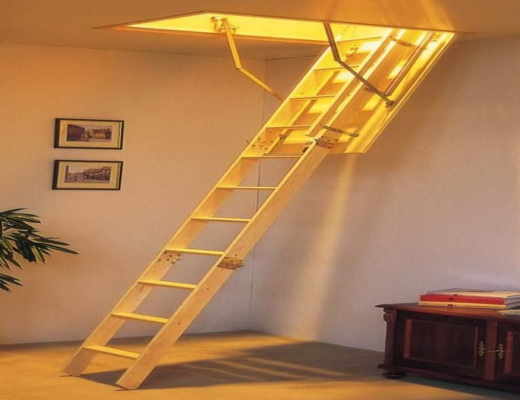Automated gates aren’t just fixtures — they’re machines, and like any machine, they need regular upkeep to stay safe, reliable, and compliant. Under Australian WHS laws, gates are classed as plant, meaning you have a duty to manage any risks and keep the system in good working condition. The AS/NZS 60335.2.103 standard sets out safety requirements for gate operators, and WorkSafe WA has highlighted serious incidents where maintenance was ignored.
Here’s a practical maintenance checklist, broken down by how often each task should be done. It’s based on local safety guidance, manufacturer recommendations, and what we see every day in the field.
The checklist at a glance
| Frequency | What to do |
| Before use / Weekly | Quick visual once-over, clear debris, confirm the gate runs smoothly and stops on obstruction, check that sensors are clean and aligned |
| Monthly | Lubricate moving parts, check chain or rack wear and tension, tighten fixings, inspect cables and conduits |
| Quarterly | Test the manual release, verify safety edges and photocells stop or reverse the gate, check battery backup, review logs |
| 6–12 months (by a competent technician) | Full service, force and travel limit testing, review compliance against AS/NZS 60335.2.103, update risk assessment, replace worn rollers, wheels and hinges |
Sources underpinning these tasks include WorkSafe WA guidance on plant, Australian safety guidance for gate drives, manufacturer test procedures and industry maintenance schedules.
Before use or weekly: quick safety checks
- Look and listen. Watch a full open and close cycle. Any grinding, shuddering or stalling is a red flag. Unwanted reversals usually point to dirty or misaligned sensors.
- Clear the travel path. Remove leaves, stones and rubbish from tracks, racks and wheel paths, especially on sliding gates Perth residents often specify for tight driveways. Debris can trigger force limits or cause derailment.
- Clean the photocells. Clean, align and test them by breaking the beam during travel. The gate should immediately stop or reverse.
- Check the fixing points and stoppers. Loose bolts and bent endstops are a common cause of run-on and impacts. WorkSafe WA highlights falling or runaway industrial gates when these aren’t maintained.
Monthly: keep it moving
- Lubricate correctly. Use a light, sprayable white lithium grease on chains, racks, hinges, guides and rollers, unless your manufacturer specifies otherwise. Wipe off excess to avoid attracting grit.
- Tension and wear. Check the chain or rack for slack spots and uneven wear. Replace worn sprockets or pinions.
- Cables, glands and conduits. Look for UV damage, crushed conduit and water ingress at junction boxes. Electrical work must follow AS/NZS 3000, but even as an owner you can spot obvious deterioration.
- Housing and seals. Clear spiders, ants and dust from the operator cabinet. Moisture and pests wreak havoc on boards and limit switches.
Quarterly: test safety systems, not just movement
- Manual release drill. Can you cut the power and switch the gate to manual mode in under 30 seconds? Practise this, then lock it back up and restore power.
- Safety edges and force limits. Activate each safety edge and confirm the gate stops or reverses straight away. If needed, reset the force limits. European test methods (EN 12453) are commonly referenced by suppliers working in Australia.
- Battery backup and solar. Simulate a power failure and make sure the gate runs on backup. Replace batteries if they’re slow or unreliable.
- Keep a logbook. Record faults, fixes and test results. That single document will save time and prove diligence if something goes wrong.
6–12 months: bring in a competent technician
Most residential systems only need one service a year. For higher-traffic setups — like shared driveways or small businesses – schedule servicing every six months.A technician should check travel limits, motor current draw, gear wear, correct operation of every safety device, and confirm the installation still meets AS/NZS 60335.2.103. For owners comparing quotes for electric gates Perth wide, make sure the service includes written test results, not just a quick grease and go.
Material-specific notes
- Powder-coated steel and aluminium: Hose it down with fresh water and mild detergent every few months to prevent tea staining. That’s especially important near the coast – even for aluminium gates Perth residents often choose for corrosion resistance.
- Timber cladding: Recoat as per the oil or paint specs. Swelling timber can put pressure on the motor and trip the safety sensors.
Compliance is ongoing, not a one-off
Manufacturers like Nice, BFT and others outline formal testing of photocells, safety edges and emergency stops after installation and during routine maintenance. If you change the gate weight, hinge geometry, operator or control logic, you need to re-test. Gate Safe’s specification tool is a good visual checklist for end users who want to understand what “safe” should look like.
Stop and call a pro if…
- The gate closes with noticeable impact or doesn’t stop on contact.
- Photocells don’t stop movement when the beam is broken.
- The structure is cracked, leaning or the rollers have jumped the track.
- There’s any sign the gate could fall, which SafeWork NSW has repeatedly warned about.
Treat your gate like any other powered machine: routine inspection, sound recordkeeping, and scheduled professional servicing. For owners comparing installers and service providers for gate automation Perth, ask about their testing procedure, what standards they verify against, and how they’ll document each visit. Do that, and your system will stay safe, compliant and dependable for years.
And yes, if you’re weighing up material, drive type or layout for automatic gates Perth, sliding gates Perth, or even retrofit options, the same principles apply: keep it clean, test your safety gear, and write everything down. A bit of routine care goes a long way in keeping your system safe, compliant and reliable for years to come.




